StarBook Mk V From Star Labs Review: Can It Replace Big Names In The Segment?
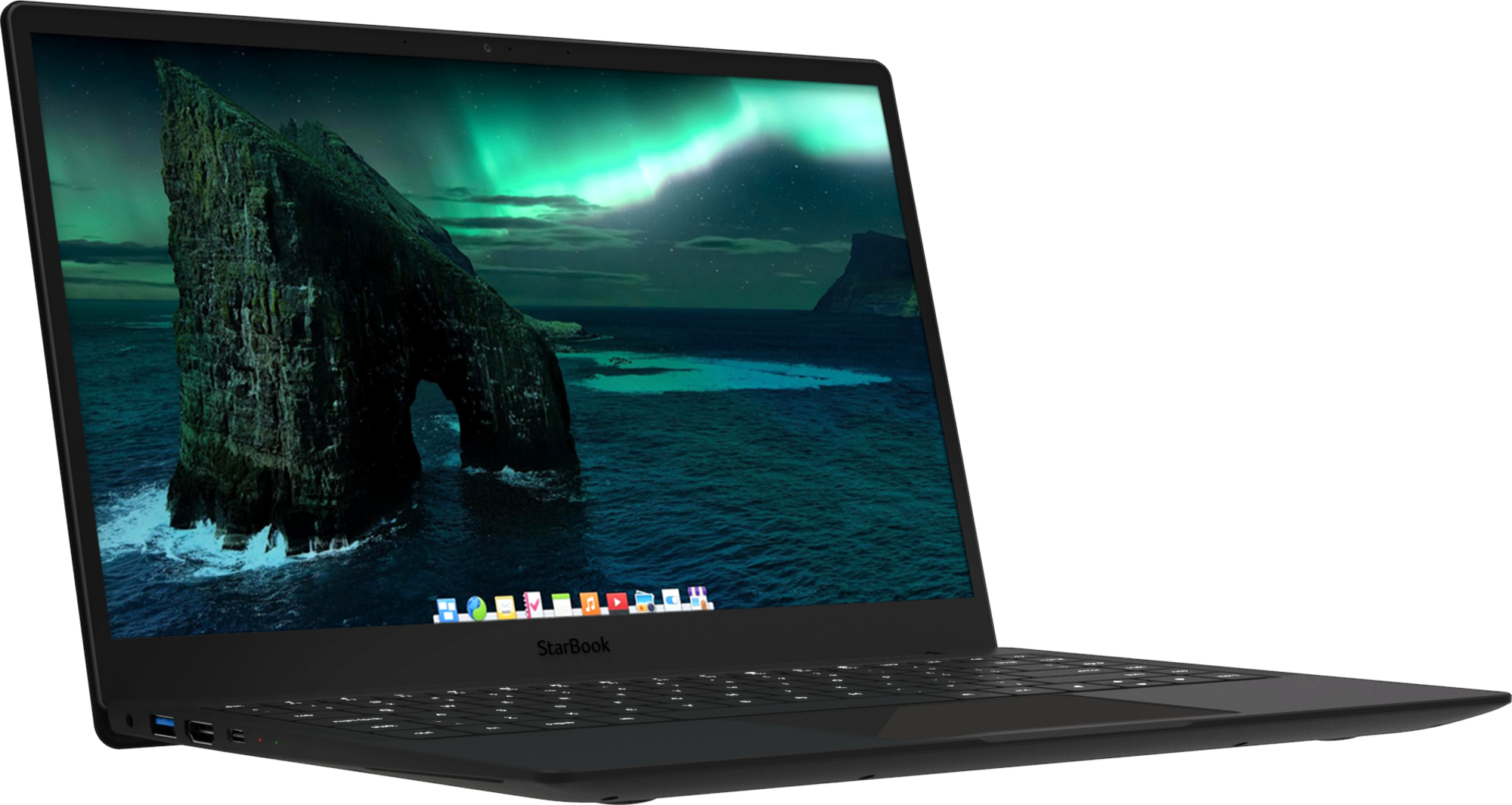
Star Labs is a UK-based company focused on delivering a premium Linux laptop experience. Star Labs was started in 2016 with the notion that no organizations were trying to create the “experience that macOS and Windows users had” for Linux users was a problem that had to be solved. Star Labs StarBook Mk V is one of their latest attempts to solve that problem.
Starting out leveraging Clevo prebuilt systems, as most Linux targeting laptop vendors do, they realized after only a few iterations that the products were lacking compared to competing laptop vendors. Given that Linux can run on virtually anything, any laptop manufacturers were essentially direct competitors.
In 2018 Star Labs stopped using Clevo as a vendor, moving on to designing and releasing Star Lite Mk II and Star LabTop Mk III. While the Star LabTop line doesn’t seem to be around anymore, Star Lite is not in its fourth iteration.
We’ve covered Star LabTop and Star Lite incarnations in the past. The bottom line is it’s still the same, and premium Linux-first laptops do exist.
Specifications
Star Labs StarBook Mk V has a few options to select from. In terms of CPUs, you can choose between the Intel Core-i3 1110G4 or the Core-i7 1165G7. Memory capacity is available in options ranging from 8GB to a very impressive 64GB. Finally, storage has the most options with various SSD capacities in SATA, PCIe 3.0, and PCIe 4.0 models. The SATA SSD is pretty tame by today’s standards, but the PCIe 3.0 SSD provides solid read and write speeds, and the PCIe 4.0 SSD has a cable of up to 7GB/s read speeds.
- CPU Options:
- Memory Options:
- 8GB 3200MHz DDR4
- 16GB 3200MHz DDR4
- 32GB 3200MHz DDR4
- 64GB 3200MHz DDR4
- Storage Options:
- 240GB Over-Provisioned SATA SSD
- 480GB Over-Provisioned Gen3 PCIe SSD
- 960GB Over-Provisioned Gen3 PCIe SSD
- 1920GB Over-Provisioned Gen3 PCIe SSD
- 500GB Over-Provisioned Gen4 PCIe SSD
- 1000GB Over-Provisioned Gen4 PCIe SSD
The unit I was given for review contains the Core-i7, 32GB of RAM (still impressive for a laptop), and the 960GB PCIe 3.0 SSD. Moving on from the configurable hardware, there are also a number of other notable specifications.
Display
Surprisingly, the matte IPS display is not configurable in any way and is only available in 1080p. I don’t think anything beyond 1080p is necessary for the 14″ display size, but the extra resolution would be nice for the media.
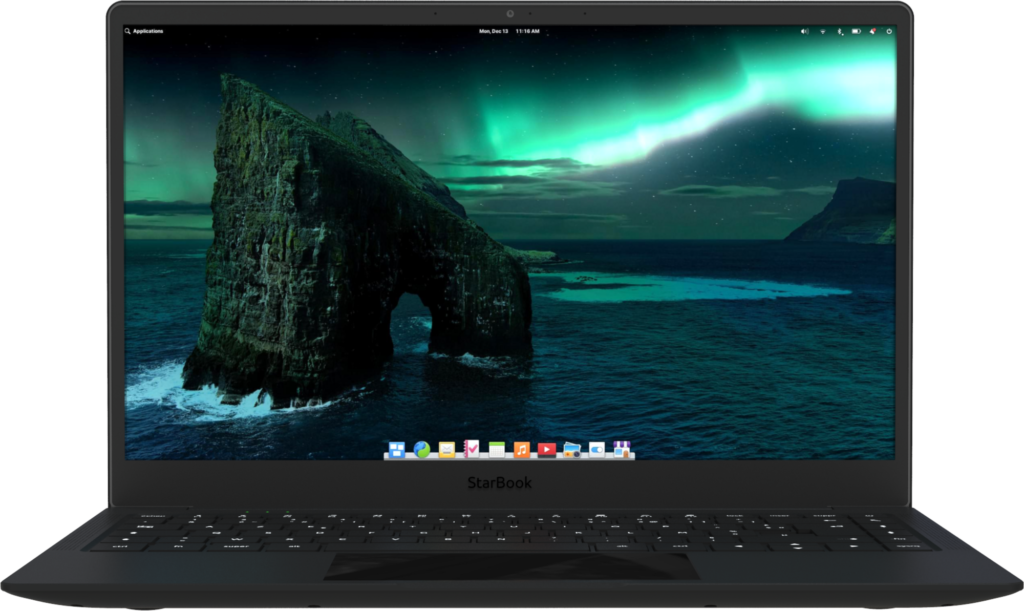
These numbers (available on the product specifications page) don’t mean much to me, but they’re likely meaningful to some out there.
| Brightness: | 400cd/m² |
| Type: | TFT-LCD |
| Color Depth (NTSC): | 72% |
| Color Depth (sRGB): | 100% |
| Contrast Ratio: | 1000:1 |
| Haze: | 21% |
| Coating: | 3H Hard Coat |
Networking
While there isn’t ethernet on the StarBook Mk V, you shouldn’t be disappointed. The Intel AX201 802.11ax/Wi-Fi 6 wireless chipset is capable of up to 2.4Gbps speeds. The chipset also includes Bluetooth 5.1.
Connectivity and Input
Star Labs did not hold back on the IO.
Down the left-hand side, we have a Thunderbolt 4 (40Gbps) USB Type C connector capable of USB Power Delivery (charging) specifications, HDMI, USB 3.0 Type A, and a DC charger barrel jack. That means you can use the USB C port to charge if you’d like, but you can always fall back to the barrel jack to charge if you don’t have a USB hub with a PD power pass-through handy.
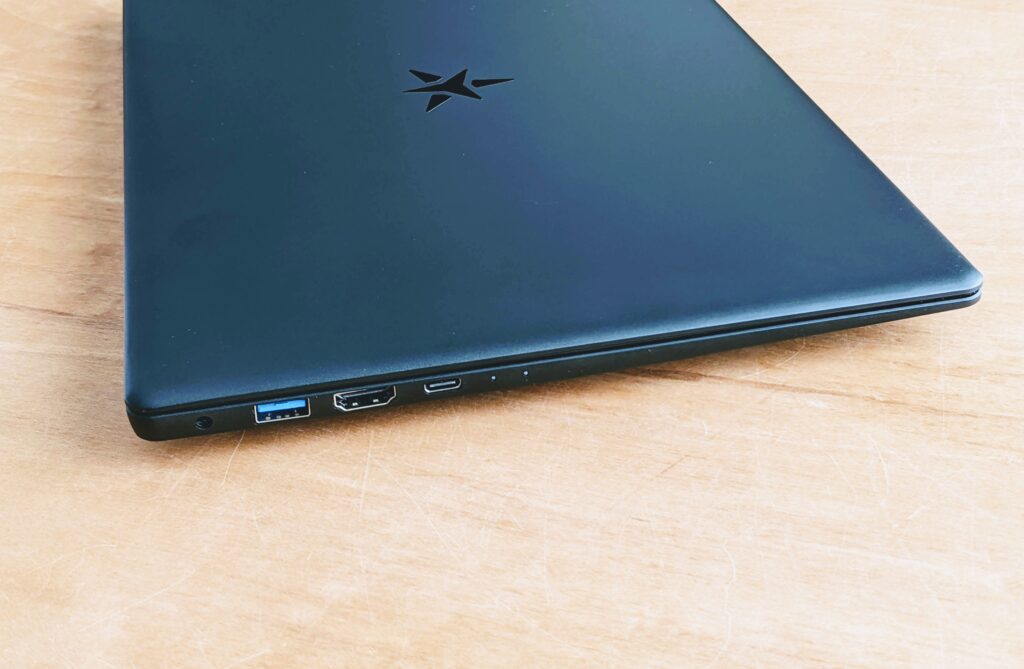
On the right-hand side, there’s a micro SD card reader, a 3.5mm combination audio jack, another USB 3.0 Type A, and finally, a USB 2.0 Type-A.
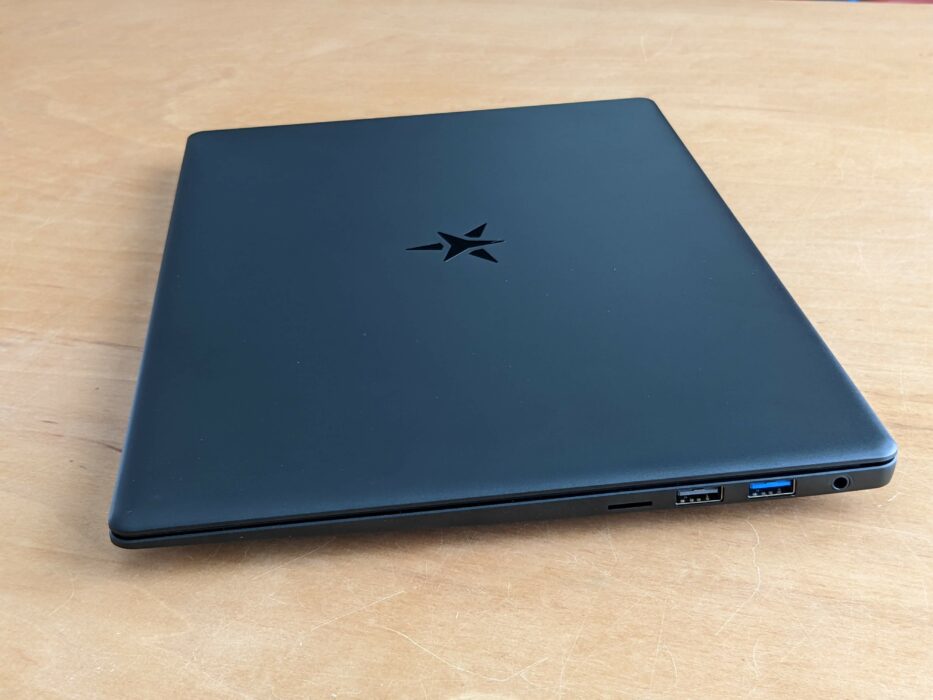
I like the inclusion of the USB 2.0 jack, as counterintuitive as it might be. Linux is predominantly used by developers and technology professionals and is often the platform for embedded development. Some devices require, for some reason or another, USB 2.0 rather than USB 3.0.
Some astute readers might say it shouldn’t make a difference because USB 3.0 will only use four pins when connecting to a USB 2.0 device, which is true. But there are some devices out there that can make that distinction. I was trying to flash the eMMC of an RK3399 SBC over its USB Type C port, and it kept on failing.
It turns out that, despite being USB Type C (which was released well after USB 2.0), the device still needs to connect via USB 2.0. So, including a USB 2.0 port could be very valuable in a premium laptop for certain users.
The backlit keyboard is available in German, Spanish, French, Nordic, US, and UK English layouts. The trackpad is made of glass for precision and supports multi-touch gestures. Finally, there is a 720p webcam with dual microphones.
Power and Battery
The StarBook Mk V comes with a 65Wh lithium-polymer battery that is claimed to last as much as 11 hours. This claim isn’t qualified with any usage conditions. Still, considering that the laptop manages to idle with the CPU at a little over 30℃ with the fans inaudible, I think that it’s likely achievable in practice.
Back to connectivity for a minute, there are effectively two charging ports. One is just straight DC. The other is capable of USB Power Delivery specification (USB PD) power delivery negotiation.
This means that any phone or tablet charger that also supports USB PD can be used to charge the StarBook, provided there is a mutually supported voltage between the two. Now, the phone charger will likely take a long time to charge a laptop and might not even manage to charge the laptop when the laptop is in use. But this is still a solid convenience.
Firmware
This isn’t a typical heading for a laptop review. Star Labs has made a point to ensure that their products can be used with both well-supported proprietary BIOS/UEFI firmware from AMI (American Megatrends) as well as the open-source Coreboot.
Coreboot is intended to replace proprietary motherboard firmware with an open-source alternative whose security is easily audited by the public. Additionally, Coreboot allows for a number of BIOS/UEFI level configurations, such as virtualization, Hyper-Threading, TDP, and IME, to be performed from the operating system.
Going a step further, Star Labs has enabled automatic firmware updates to BIOS, Embedded Controller, and SSD via LVFS.
StarBook Mk V First Impressions
The unboxing of the StarBook Mk V wasn’t as glamorous as other products. The packaging was minimal but apparently effective in protecting the unit.
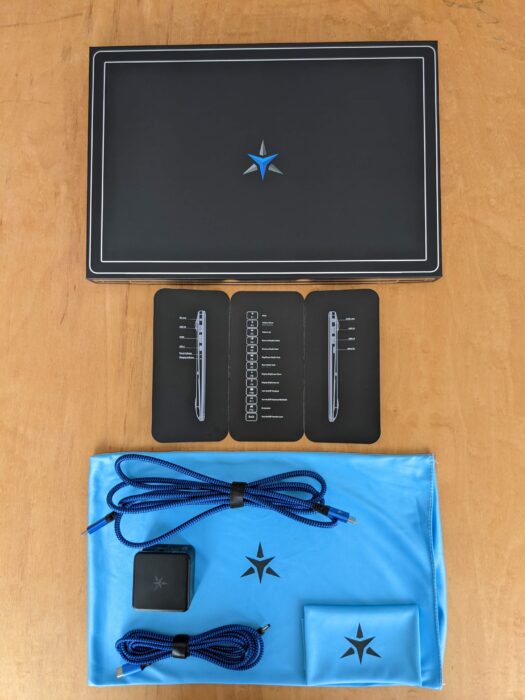
Weighing 1.4kg with a width of 32.63cm and a depth of 22.04cm, it’s a hefty laptop for its size. It’s not quite as thin as other laptops out there, but at 1.8cm thick, it’s barely noticeable. I always find myself afraid of breaking MacBook Airs. Some laptops are just too thin (phones are even worse…). This density imparts the premium feeling I’ve come to expect from Star Labs products.
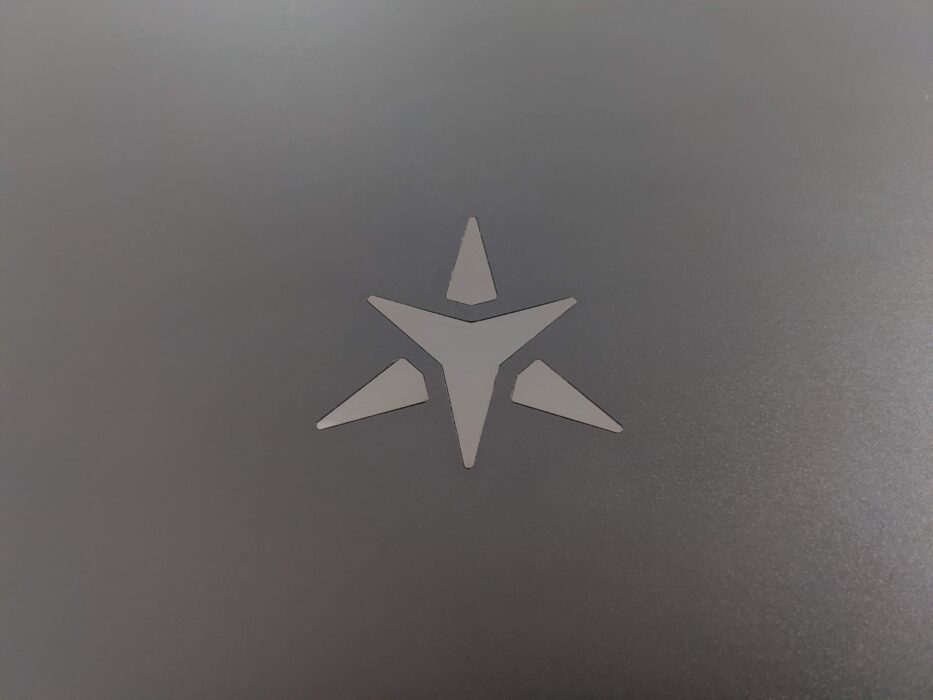

The black anodized aluminum chassis is very slick-looking. It really strikes a good balance of “I’m an all-black, metal laptop” and looking like something someone can use in a professional environment. That is to say, it’s a nice elegant design, but it’s not gaudy like a lot of gaming laptops. Because of the matte finish, you can see where you’ve handled it.
The finger marks are easily seen, especially at certain angles. This became even more apparent when I started taking photos. Because of the slight texturization of the anodized aluminum, you need a fair amount of alcohol to clean the smudges. It should be noted that the problem isn’t particularly bad unless you need to take nice photos of the laptop. Otherwise, it’s just par for the course with this type of finish. C’est la vie.

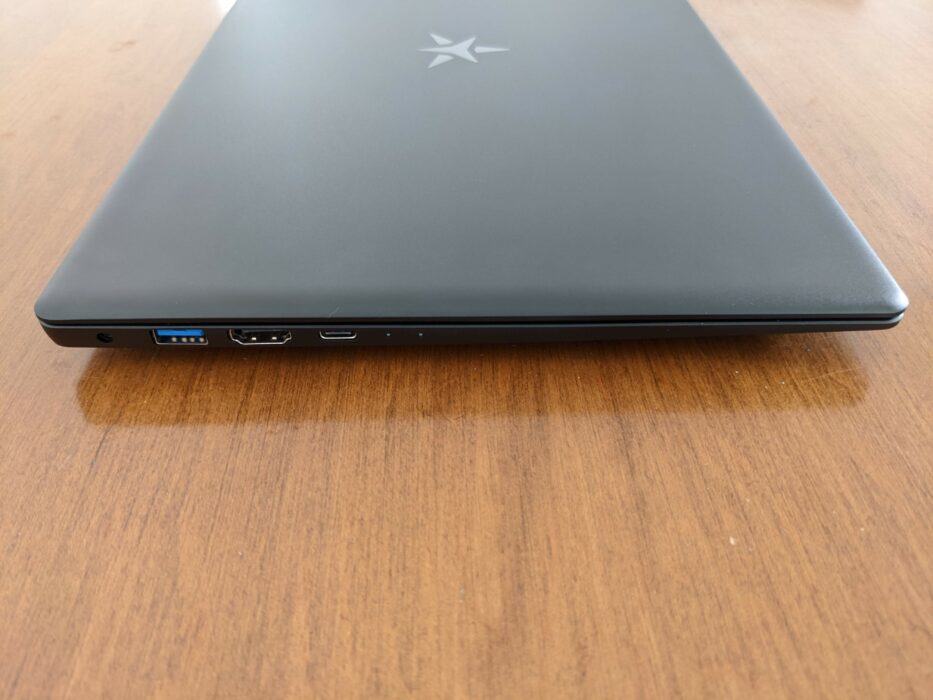
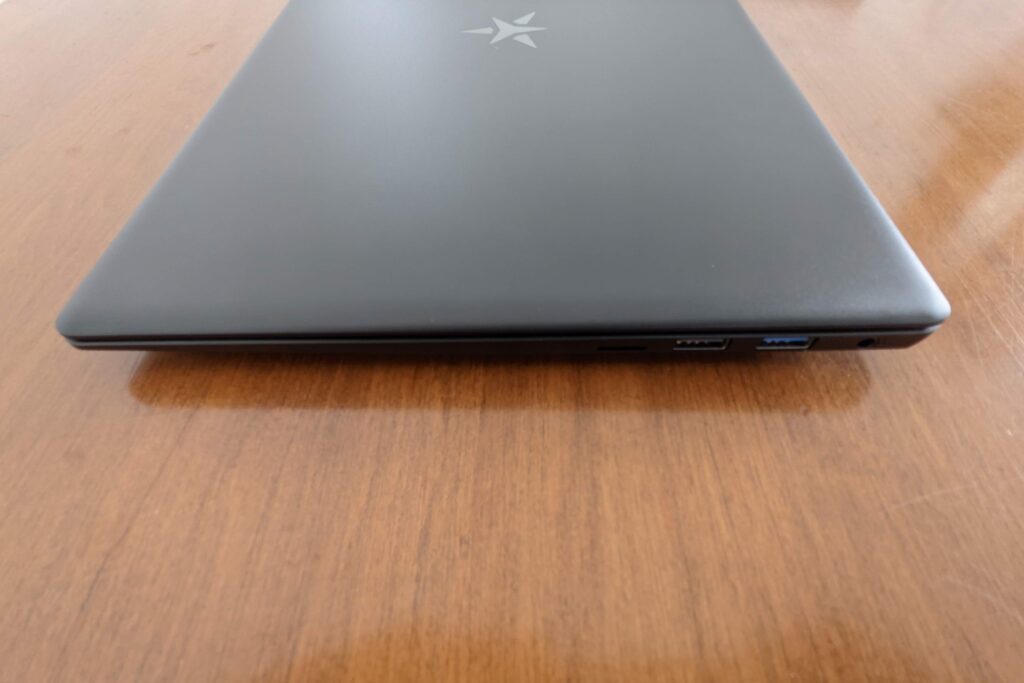
The aluminum-constructed chassis feels sturdy enough. The bottom access panel has quite a bit of flex when applied force. So much so that you can see that it makes contact with SO-DIMMs and other motherboard components. It doesn’t appear to be unsafe, though.
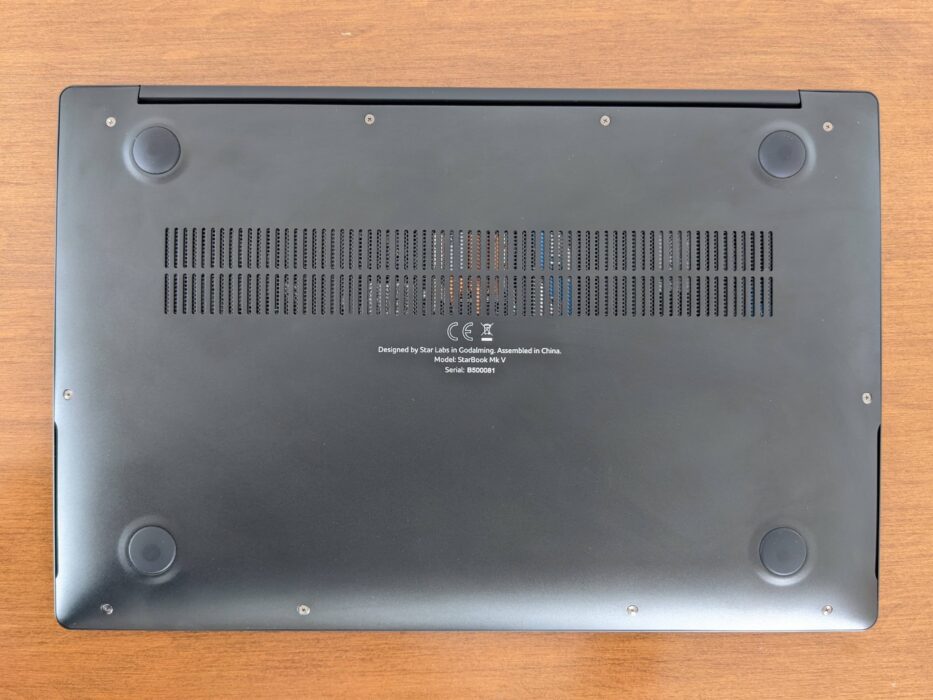
The hinge for the display is nice and snug. The display does not droop when positioned at a lower angle. The chassis does tend to lift if you don’t hold it while opening the laptop, but this is preferable over a looser hinge. The display body itself is also quite strong. While it will flex under a twisting/torsional force, it does not flex very far and is much more resistant shortly after starting to flex.
The display is almost edge-to-edge with a 7mm bezel on the sides, 10mm on the top (accommodating the camera), and 15mm on the bottom. While I think it would be nice to use real estate towards the bottom of an Mk V (you could easily fit a taskbar in that space), it might not be feasible with the readily available panels and their aspect ratios.
Performance
Unsurprisingly, the Intel Core-i7 1165G7 is a performer. All daily tasks were snappy and smooth on the StarBook Mk V, whether performed on Elementary OS (which I received on the unit) or with Manjaro.
Using systemd-analyze I checked the boot time. It consistently reported 23-24 seconds, but this seemed to be a little long. So, I dug deeper. It systemd-analyze included BIOS/UEFI time and a service lingering around for a while after the desktop was available. So, I did things the old-fashioned way and used a stopwatch.
From power-on, or more precisely, when the keyboard’s backlight blinked, to when the desktop was displayed, it took 17 seconds. This includes the time required for the BIOS/UEFI prompts to pass, which are not tied to performance but are on timers. Keeping in mind that the review unit I received was equipped with a PCIe 3.0 SSD rather than a PCIe 4.0 SSD, I think that the StarBook Mk V can shave some time off of that yet.
Updates were installed very quickly, even when there were hundreds of megabytes worth. My internet connection, typically about 80Mb/s (or 10MB/s), was a bottleneck of updates and software installations. Between the speedy SSD and powerhouse CPU, updates were just a short breeze.
To benchmark the StarBook a little more objectively, I turned to Phoronix Test Suite. If you’re unfamiliar, Phoronix Test Suite is a suite of benchmarking tools that aims to standardize and automate CPU benchmarking tasks.
I had no intention of performing extensive or exhaustive testing. However, I feel a good overall test would be to compile the Linux kernel. This is a rather large project and used to take my laptops for quite some time. Often fifteen to twenty minutes or more.
I installed the Phoronix pts/build-linux-kernel test and ran it with the defaults. This included three test runs. The build was completed with an average of 227 seconds (3 minutes, 47 seconds) and was less than one percentage point below average for the CPU. Considering that I had Firefox open and a few many other applications (again, not intending to be exhaustive), I think that it performed very well.
On the networking side of things, I wasn’t very well equipped to test the full capacity of the Intel AX201 properly. I haven’t made the leap to 802.11ax at home yet, so I was limited to my 802.11ac setup. I did some rudimentary testing of the wireless (again, on an 802.11ac/Wi-Fi 5 access point) to compare to a gigabit wired connection (via USB C), and the wireless performed indistinguishably in internet speed tests (as I said, it was rudimentary).
Display
Again, I was a little remiss in finding out that there is no 4K option for such a premium device. 4K displays are becoming commonplace on many devices. There were even phones released several years ago that had QHD displays. Despite that, the display is 1080p (FHD) and provides a very clear and crisp reading experience.
Interestingly, I found a very slight color skew in the extremely dark and bright colors. When displaying black and very dark colors, the display had a slightly warmer tone than my desktop displays. And, conversely, when displaying white and very bright colors, it had a slightly cooler tone.
Despite this odd skew compared to my office-grade monitors (they’re really nothing special and could be at fault in this comparison), there’s nothing I could complain about regarding the display. The display makes for a pleasant media experience, whether movie watching or reading.
Keyboard & Trackpad
Keyboard
The typing experience on the StarBook Mk V is a bit of a mixed bag. Esthetically, the keyboard is very appealing and follows the general design theme of the rest of the laptop. The keycaps have a surprisingly smooth texture (or lack of) to them.
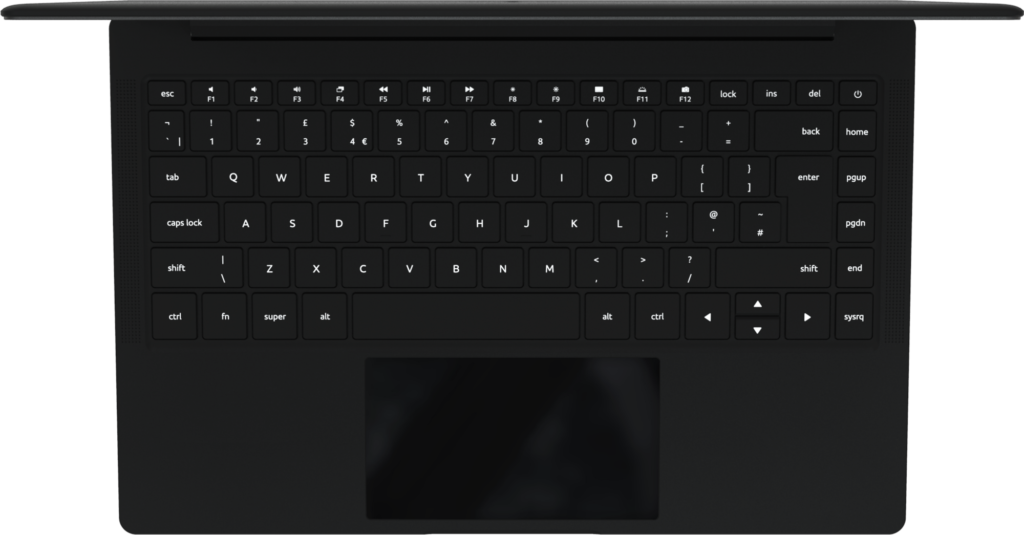
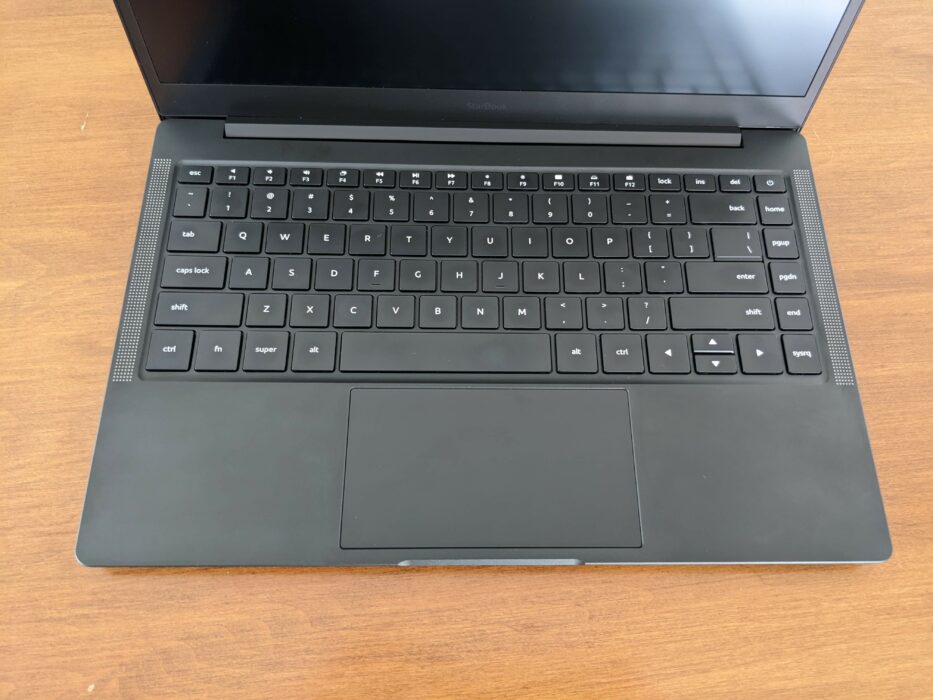
Contrary to esthetics, though, the typing experience is lackluster. The key is what I would describe as a “sub-chicklet.” They have a very short throw, and the tactile feedback is almost imperceptible after reaching a certain typing speed. It doesn’t feel mushy, but because of the lack of tactility during the keys’ actuation, you’re relying on the tactility of the keys bottoming out, which is much more subtle.
Additionally, the keycaps have no discernable contour or topology. This makes locating the centre of the keys somewhat difficult. Exaggerating this issue are the density of the keys, the edge radius, and the aforementioned smoothness. The result is that, as a non-touch typist, it can be difficult to know where you are on the keyboard. It becomes easy to lose track of which keys your fingers are on and press the wrong keys entirely.
The keyboard is backlit. This is always nice to have, especially for those that often find themselves working in lower lighting. What I found, though, is that the backlight isn’t very bright through the keys. For the backlight to be visible, the display brightness needs to be quite low.
The StarBook Mk V has a bit of a learning/comfort curve. It requires some acclimation. It’s not a bad experience once you get used to it, but it would certainly benefit from more pronounced tactility and a keycap texture or topology that would assist in finding key centers.
Trackpad
The trackpad is another mixed bag. At first glance, it’s very wide, maximizing the space available to it. The glass surface has an excellent premium feel. The tracking is top-notch. Two-finger scrolling and other multi-touch gestures work incredibly well. It’s all around very responsive and everything you would expect on a premium laptop.

That is, until you push to click. The push-click, or force-click, is reminiscent of years-old laptops. The trackpad has push-click buttons in each of the lower corners that are activated by pushing strictly in their respective lower quarters.
This is something that I feel we should have abandoned some time ago in favor of full-pad force-clicking that uses tracking or multi-touch to differentiate between the primary and secondary clicks (left- and right-clicking seem to be obsolete terms in this context). The isolation of the push-click to specific corners feels unfitting for this premium laptop. Especially when the farther you stray from the corner, the more force is required for push-clicking.
Despite my disagreements with the push-click mechanics, the StarBook Mk V trackpad experience is very good. The exemplary tracking of the large glass surface with its responsive multi-touch compensation for the push-click expertise means that you can likely avoid using the push-click almost entirely.
Camera and Audio
The web camera is a particularly weak point of this laptop, in my opinion. The image quality is the same as low-end laptops have had for a long time. Even with photos, the image produced is very blurry and noisy. It would work for some teleconferencing among a team, but I would not like to rely on this camera for remote professional meetings or job interviews.
The StarBook Mk V speakers are channeled downward through the bottom of the chassis via cutouts in the access panel. This is not optimal because you lose both volume and fidelity when the sound hits the surface below. Some of that sound energy will be absorbed or muffled by that surface. This isn’t necessarily a problem. But StarBook’s speakers are not particularly clear. They’re passible, but not great.
Parts and Warranty
Star Labs has an excellent parts and warranty policy; they even provide a guide for disassembly. However, warranty information is best left to the vendor. So, here is the warranty information from the StarBook Mk V product page.
Open warranty. Laptops designed for open-source software need open warranties. Our 1-year limited warranty allows you to take your laptop apart, replace parts, install an upgrade, use any operating system and even your own firmware, all without voiding the warranty.
Regardless of the change, be it a simple SSD upgrade, installing more memory, or a display replacement, the only tool you will ever need is a small Phillips screwdriver.
Conclusion
The StarBook Mk V is a roundup of some excellent hardware and peripherals. It’s not perfect. But it is approaching the Mac experience that Star Labs is striving for. The aluminum chassis and overall build quality immediately communicate the intention to target the premium market.
Beyond first impressions are solid performance, a top-notch trackpad, customizable firmware, and an open warranty that allows you to service your device. Star Labs is helping pave the way for the future of devices that are open, secure, and serviceable.






